Encountering Pueblo Dwellings in Arizona’s Wupatki National Monument
When you think of ruins, what comes to your mind? Maybe the flattened apartment blocks of Roman Pompeii, a once-glistening palace for a Moorish caliph, or the spindly skeleton of a Lisbon church.
For many Americans, our imaginations often turn to history-rich Europe, where the remains of empires, wars, and natural disasters are easy to see. But that’s a shame, because we can find reminders of the past in our own backyards.
Sure, they may not be on the same scale as Mexico’s monumental pyramids in Teotihuacán or Chichén Itzá, but the cliff dwellings and villages built by Ancestral Puebloans make the Southwestern U.S. the best place in the country to encounter places that were inhabited almost a thousand years ago.
Colorado’s Mesa Verde and New Mexico’s Chaco Culture are some of the biggest marks the ancestors of today’s Puebloan peoples left on the Southwest, but they’re either in the isolated Four Corners region, off long dirt roads, or both. Wupatki National Monument, by contrast, makes it easy to experience Pueblo dwellings barely half an hour outside the Grand Canyon basecamp of Flagstaff, Arizona.
Wupatki is different. Not only do you have the park’s namesake pueblo, a sprawling complex complete with a ball court, but you also have everything from dwellings perched along a canyon rim, a hilltop “fort” with panoramic views of the high desert, and a rural outpost occupying a small rocky outcropping. These four destinations make up a tiny fraction of the more than 5,000 archaeological sites in the monument and surrounding area.
If you enter the national monument from the north like I have in the past, you’ll find yourself winding around Box Canyon first. Perched along both rims of the canyon are several structures that make up Lomaki Pueblo, or “beautiful house” in Hopi. The canyon will most likely be dry, but if you can imagine the downbursts that fall during the summer monsoon season, Lomaki is where you’d want to be: safe and elevated above a flash flood.
Citadel Pueblo rises up on a short, but prominent, hill, and overlooks a massive sinkhole, making it feel even higher than it really is. From up top, you can see the tallest mountain in Arizona as well as other ruins in the distance.
Just beneath the hill lies Nalakihu Pueblo, literally Hopi for “house alone,” but more naturally “house outside the village.”
Arizona is a dry place, which means extreme temperatures are possible in both summer and winter. At Wupatki (“tall house” in Hopi), more than 100 rooms across several stories protected an entire village from the intense heat and rain of a Southwest U.S. monsoon and the bitter cold of a Colorado Plateau winter. The people who used to live here strategically built these high-rise structures next to a now-dry spring that gushed forth 500 gallons of water a day.
Just like no village in southern Spain is complete without a bullring, Wupatki also sports a ball court, perhaps inspired by games played further south in Mexico.
Today, the Navajo Nation borders this very monument, and you can see the mesas of the Hopi Reservation from the eastern side of the park. Both peoples have traditional stories about the ruins at Wupatki. The Hopi “believe the people who lived and died here remain as spiritual guardians” and many Hopi clans regularly return here.
Want to learn more about the region’s history and contemporary culture? Check out the Museum of Northern Arizona on the outskirts of Flagstaff. It shares a nice collection of archaeological artifacts while also educating visitors on the tribes who still call northern Arizona home. Time your visit to align with annual festivals that celebrate the art, food, and culture of the Hopi or Zuni people.
For many Americans, our imaginations often turn to history-rich Europe, where the remains of empires, wars, and natural disasters are easy to see. But that’s a shame, because we can find reminders of the past in our own backyards.
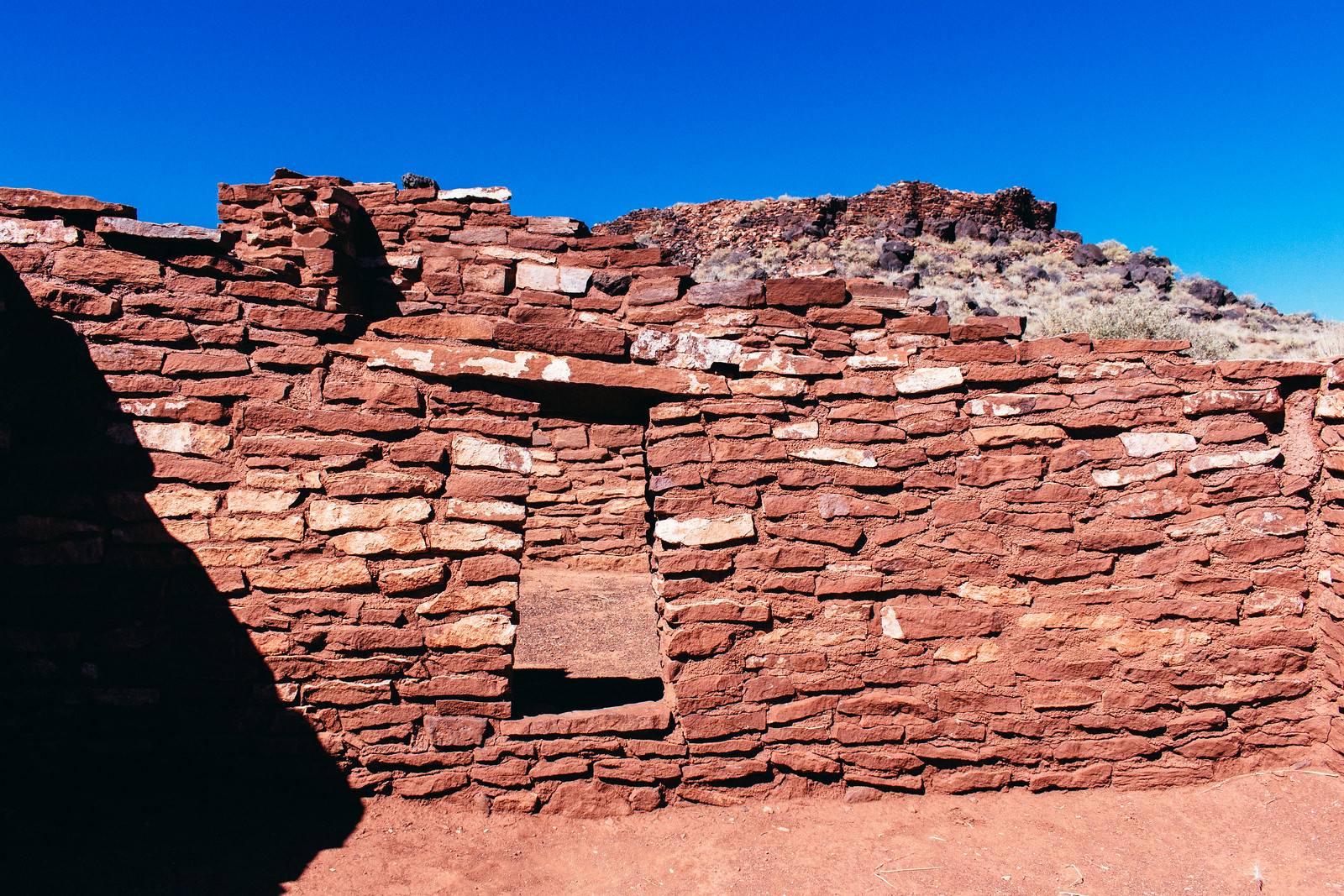 |
| Nalakihu Pueblo |
Sure, they may not be on the same scale as Mexico’s monumental pyramids in Teotihuacán or Chichén Itzá, but the cliff dwellings and villages built by Ancestral Puebloans make the Southwestern U.S. the best place in the country to encounter places that were inhabited almost a thousand years ago.
Colorado’s Mesa Verde and New Mexico’s Chaco Culture are some of the biggest marks the ancestors of today’s Puebloan peoples left on the Southwest, but they’re either in the isolated Four Corners region, off long dirt roads, or both. Wupatki National Monument, by contrast, makes it easy to experience Pueblo dwellings barely half an hour outside the Grand Canyon basecamp of Flagstaff, Arizona.
Not a one-size-fits-all monument
If you travel a little bit to the south to see Montezuma Castle or Tuzigoot national monuments in Arizona’s Verde Valley, all you can do is see one set of ruins, get your picture, spend some time at the (educational) visitor centers, and hop back in the car.Wupatki is different. Not only do you have the park’s namesake pueblo, a sprawling complex complete with a ball court, but you also have everything from dwellings perched along a canyon rim, a hilltop “fort” with panoramic views of the high desert, and a rural outpost occupying a small rocky outcropping. These four destinations make up a tiny fraction of the more than 5,000 archaeological sites in the monument and surrounding area.
Lomaki: the canyon rim
 |
| Lomaki Pueblo |
If you enter the national monument from the north like I have in the past, you’ll find yourself winding around Box Canyon first. Perched along both rims of the canyon are several structures that make up Lomaki Pueblo, or “beautiful house” in Hopi. The canyon will most likely be dry, but if you can imagine the downbursts that fall during the summer monsoon season, Lomaki is where you’d want to be: safe and elevated above a flash flood.
Citadel: the hilltop fort
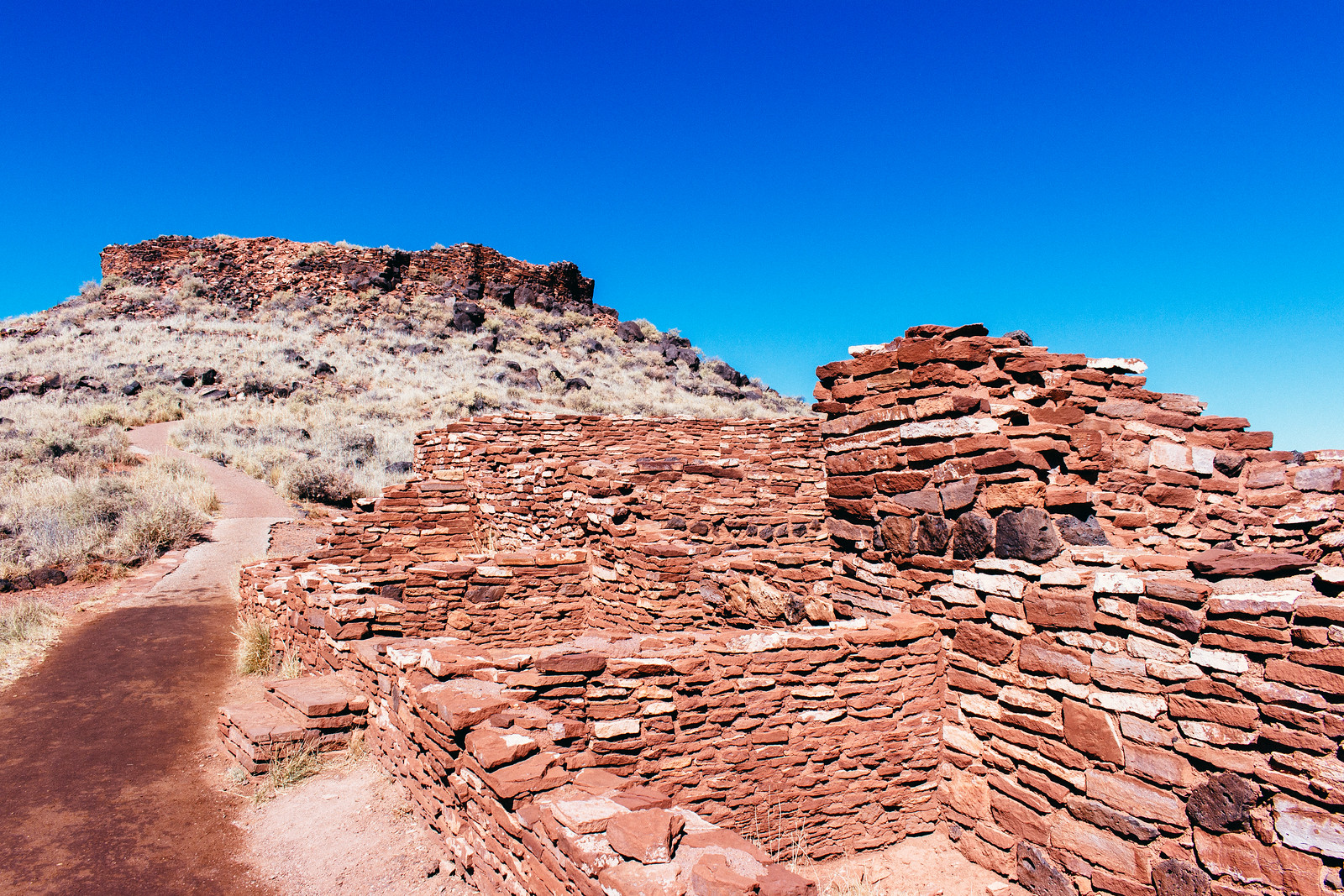 |
| Nalakihu Pueblo and Citadel Pueblo |
Citadel Pueblo rises up on a short, but prominent, hill, and overlooks a massive sinkhole, making it feel even higher than it really is. From up top, you can see the tallest mountain in Arizona as well as other ruins in the distance.
Just beneath the hill lies Nalakihu Pueblo, literally Hopi for “house alone,” but more naturally “house outside the village.”
Wupatki: the bustling town
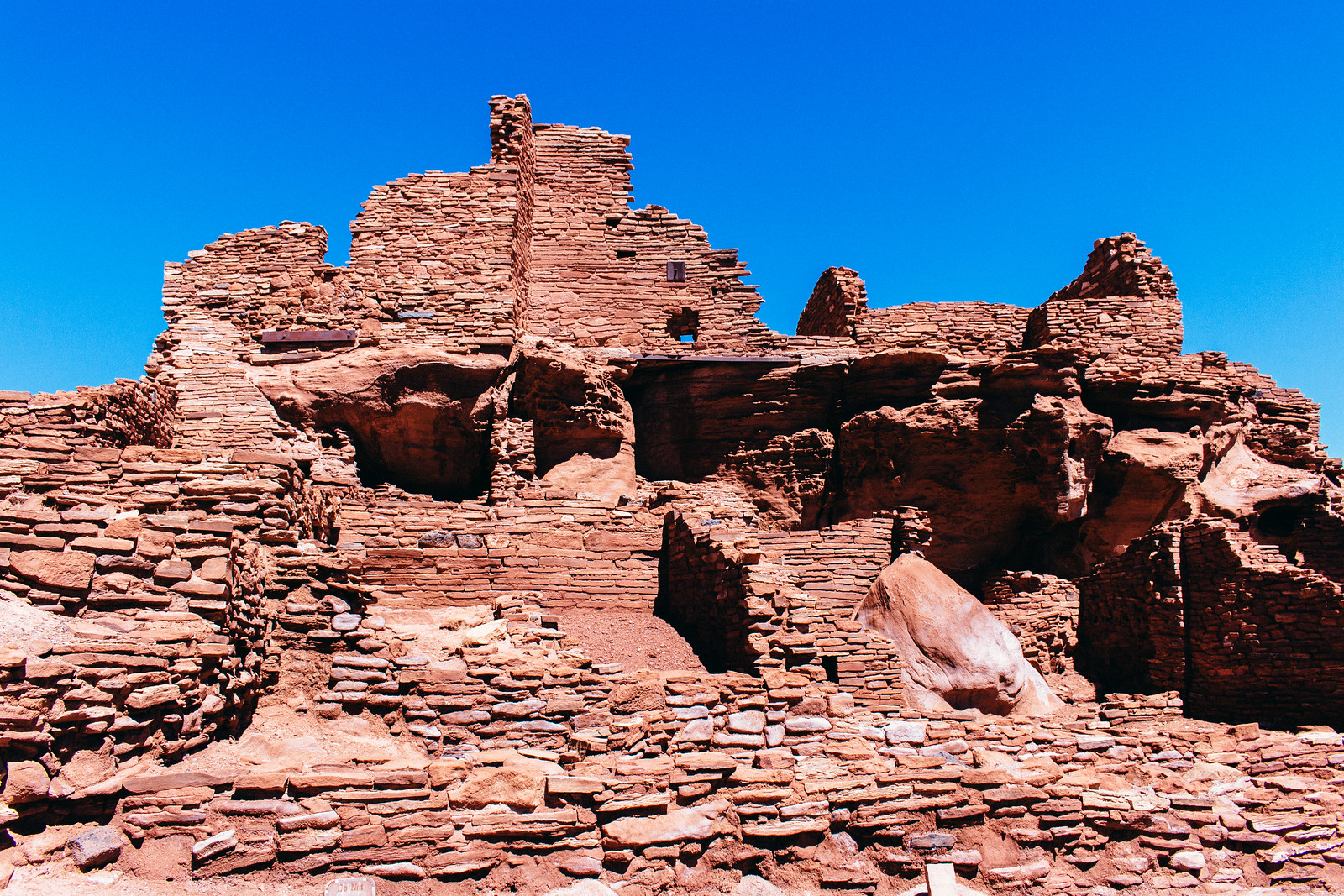 |
| Wupatki Pueblo |
Arizona is a dry place, which means extreme temperatures are possible in both summer and winter. At Wupatki (“tall house” in Hopi), more than 100 rooms across several stories protected an entire village from the intense heat and rain of a Southwest U.S. monsoon and the bitter cold of a Colorado Plateau winter. The people who used to live here strategically built these high-rise structures next to a now-dry spring that gushed forth 500 gallons of water a day.
 |
| Ball court |
Just like no village in southern Spain is complete without a bullring, Wupatki also sports a ball court, perhaps inspired by games played further south in Mexico.
Not far from the ball court lies a blowhole, a curious little geologic feature that either spews air out of or sucks air into an underground cavity depending on the air pressure of the moment.
Wukoki means “big house” in Hopi, but I think this compact pueblo resembles more a big ship floating in the scrublands of the high Arizona desert. In contrast to the park’s namesake ruins, at Wukoki, you’re free to crawl through doorways into neighboring rooms. Take a peek through some windows and you’ll see the volcanic San Francisco Peaks to the west and the Hopi Mesas to the east.
But the people who settled in this area had a special advantage: freshly laid down volcanic ash from Sunset Crater just to the south. When this volcano erupted around 900 years ago, it created the ideal conditions for farming in the desert. You’d think ash might choke out any hope for life, but ashy soil actually holds onto the little water that falls here—making agriculture possible. Just decades after Sunset Crater exploded, spewing lava and ash all around, a thriving community had sprung up nearby that would last for two centuries.
Wukoki: the rural compound
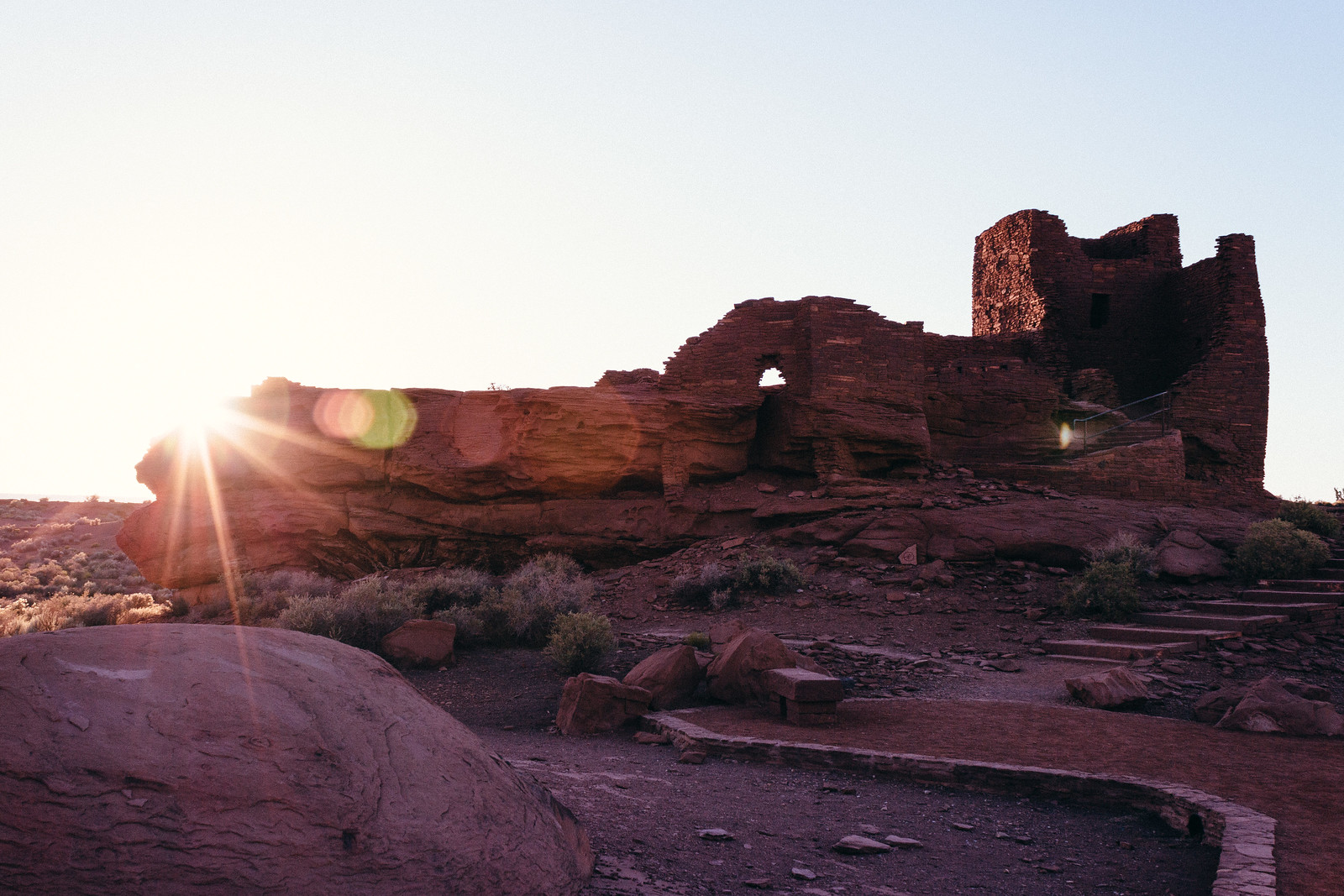 |
| Wukoki Pueblo |
Wukoki means “big house” in Hopi, but I think this compact pueblo resembles more a big ship floating in the scrublands of the high Arizona desert. In contrast to the park’s namesake ruins, at Wukoki, you’re free to crawl through doorways into neighboring rooms. Take a peek through some windows and you’ll see the volcanic San Francisco Peaks to the west and the Hopi Mesas to the east.
Who the Sinagua people were
Archaeologists refer to the people who built Wupatki, Wukoki, etc. as the “Sinagua” people, using the Spanish word for “without water” as they managed to cultivate corn, beans, and squash while relying on fickle monsoon rains.
 |
| Doorway |
But the people who settled in this area had a special advantage: freshly laid down volcanic ash from Sunset Crater just to the south. When this volcano erupted around 900 years ago, it created the ideal conditions for farming in the desert. You’d think ash might choke out any hope for life, but ashy soil actually holds onto the little water that falls here—making agriculture possible. Just decades after Sunset Crater exploded, spewing lava and ash all around, a thriving community had sprung up nearby that would last for two centuries.
Reminder: Native Americans are still here
These pueblos weren’t abandoned, their residents vanishing into thin air. Instead, the inhabitants just…moved on. As the region’s climate changed, residents of what we now call Wupatki scattered across the Colorado Plateau, joining other communities who would become the ancestors of today’s Hopi, Zuni, and other Puebloan groups.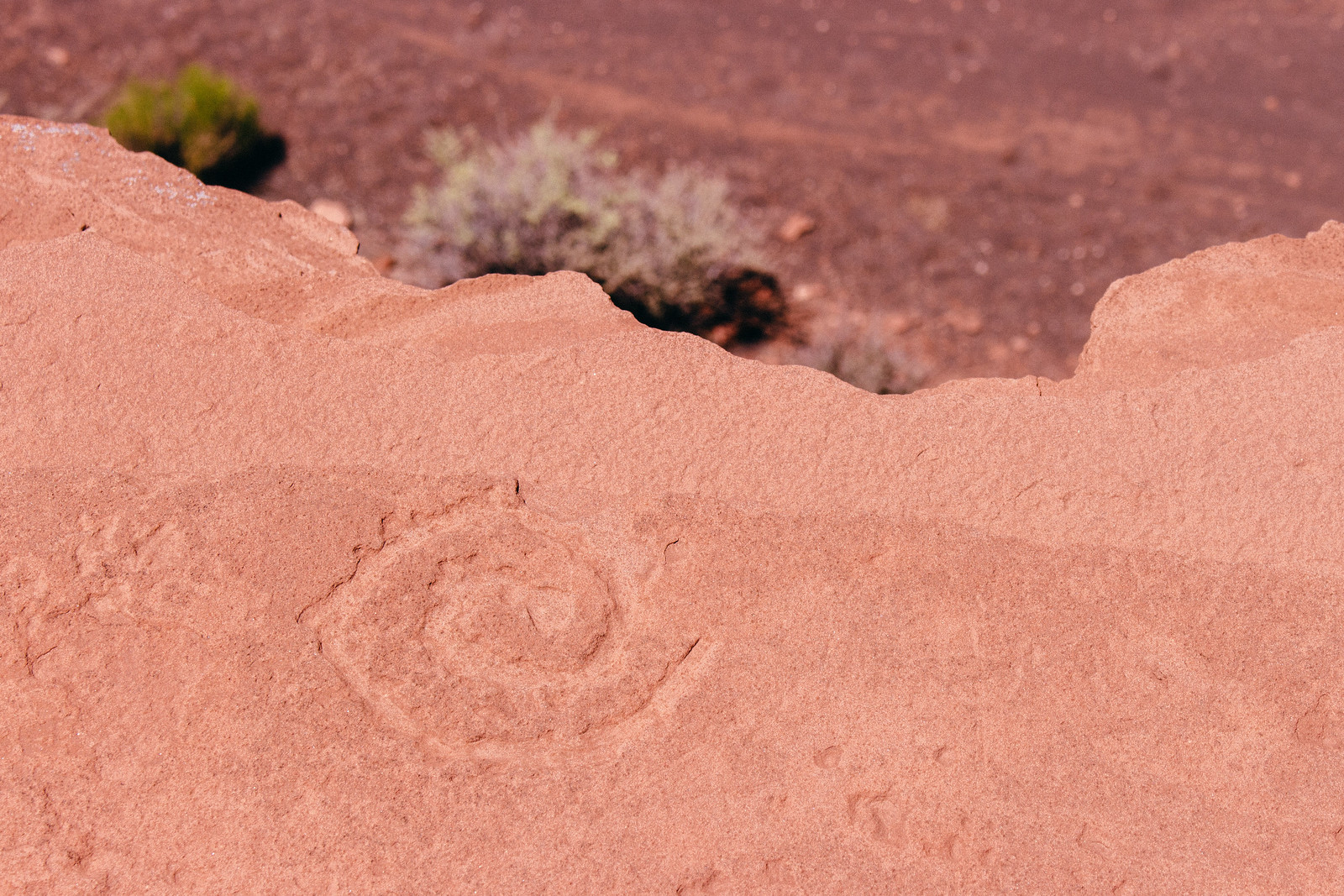 |
| Petroglyph |
Today, the Navajo Nation borders this very monument, and you can see the mesas of the Hopi Reservation from the eastern side of the park. Both peoples have traditional stories about the ruins at Wupatki. The Hopi “believe the people who lived and died here remain as spiritual guardians” and many Hopi clans regularly return here.
Want to learn more about the region’s history and contemporary culture? Check out the Museum of Northern Arizona on the outskirts of Flagstaff. It shares a nice collection of archaeological artifacts while also educating visitors on the tribes who still call northern Arizona home. Time your visit to align with annual festivals that celebrate the art, food, and culture of the Hopi or Zuni people.
A #ProTip for a better experience
This isn’t a busy national monument by any means, but it’s always nice to enjoy the silence and appreciate the ruins with no distractions.My recommendation? Come here in the summer after the visitor center closes at 5:00pm. The trails stay open until sunset, which in Flagstaff from June through August means you’ve got an additional two hours to explore things without the crowds—or the sun overhead.
I was last here over Independence Day weekend in 2019, and getting to experience normally busy Wupatki with no other tourists around—or Wukoki pueblo during the enchanting Golden Hour sunlight—was like seeing it for the first time all over again.
I know hiking 18 miles round trip with a two-day supply of water on your back isn’t everyone’s idea of fun, but one of my coworkers has done this very trip and highly recommended it not just for the ruins but also the rock art along the way.
The park service notified me that I had been selected in a lottery for one of the limited slots to hike this past April, but I had to turn it down because of a wedding invitation that came up. Little did I know that the coronavirus would upend the wedding, the Crack-in-Rock, and all of my travel plans for this year. I’d love to enter the lottery again to go backpacking this October, but as I write this blog post, we’re still recovering from one of the world’s worst outbreaks of coronavirus in Arizona.
Alternatively, visit Sunset Crater Volcano National Monument to the south first and then stay on the park’s loop road east and north through Coconino National Forest to reach Wupatki.
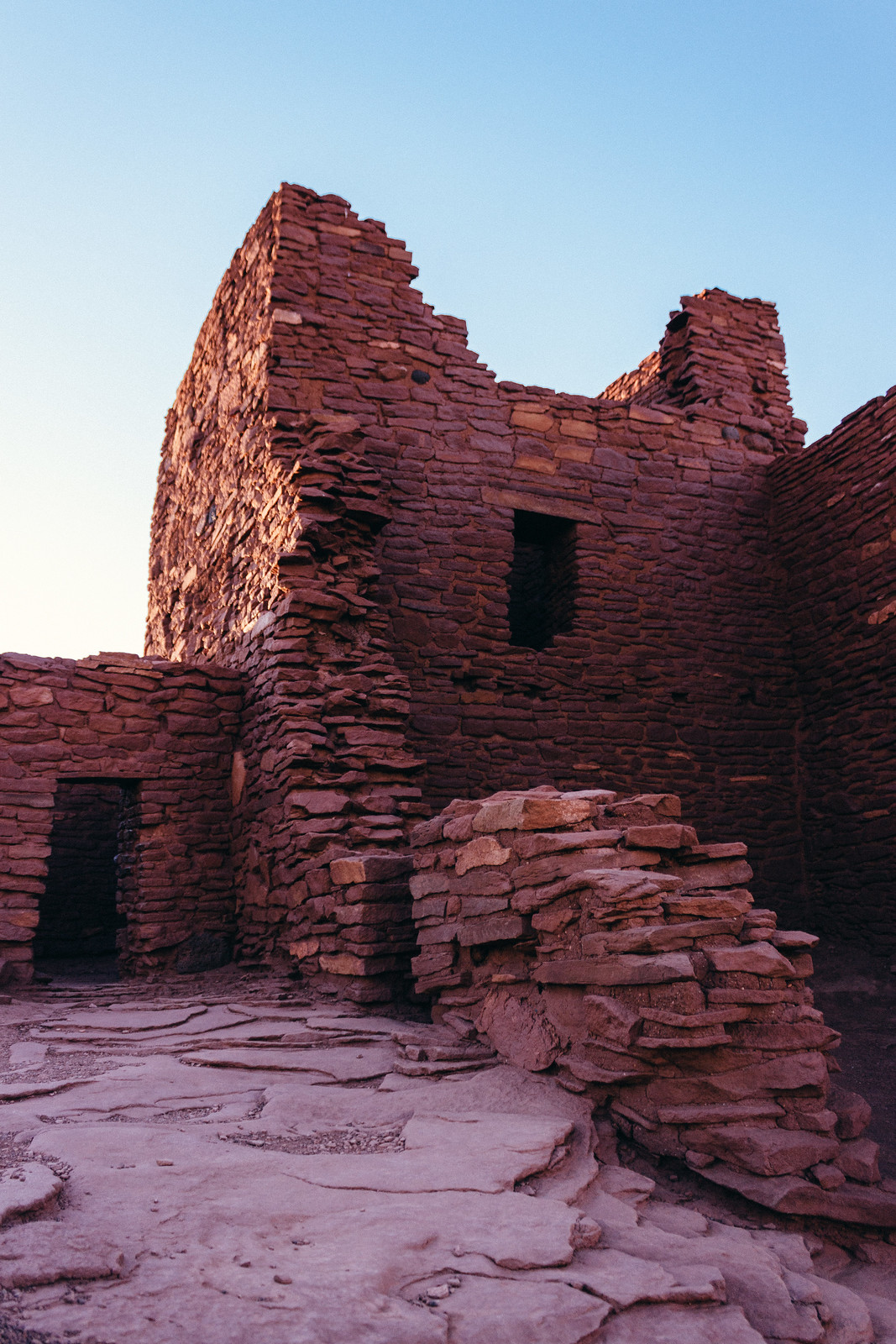 |
| Wukoki Pueblo at dusk |
I was last here over Independence Day weekend in 2019, and getting to experience normally busy Wupatki with no other tourists around—or Wukoki pueblo during the enchanting Golden Hour sunlight—was like seeing it for the first time all over again.
Why I want to go back
Wupatki isn’t just a drive-thru park. National Park Service rangers offer guided overnight backpacking trips out into the high desert every April and October to see Crack-in-Rock. This mesa-top Ancestral Puebloan site hides out in the backcountry in an undisclosed location. |
| Collared lizard |
I know hiking 18 miles round trip with a two-day supply of water on your back isn’t everyone’s idea of fun, but one of my coworkers has done this very trip and highly recommended it not just for the ruins but also the rock art along the way.
The park service notified me that I had been selected in a lottery for one of the limited slots to hike this past April, but I had to turn it down because of a wedding invitation that came up. Little did I know that the coronavirus would upend the wedding, the Crack-in-Rock, and all of my travel plans for this year. I’d love to enter the lottery again to go backpacking this October, but as I write this blog post, we’re still recovering from one of the world’s worst outbreaks of coronavirus in Arizona.
How to get there
The park entrance for Wupatki National Monument can be reached after driving 30 miles (or half an hour) north of Flagstaff, Arizona, on U.S. Route 89. The visitor center and the main Wupatki Pueblo are deep within the park, another 14 miles.Alternatively, visit Sunset Crater Volcano National Monument to the south first and then stay on the park’s loop road east and north through Coconino National Forest to reach Wupatki.

